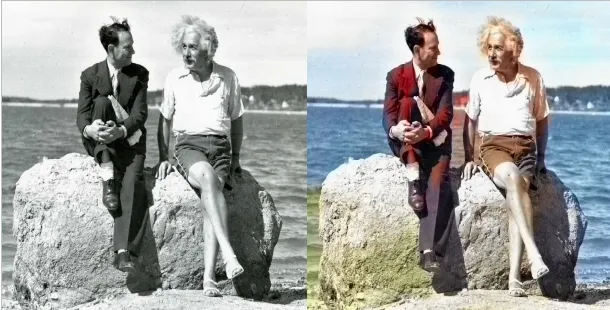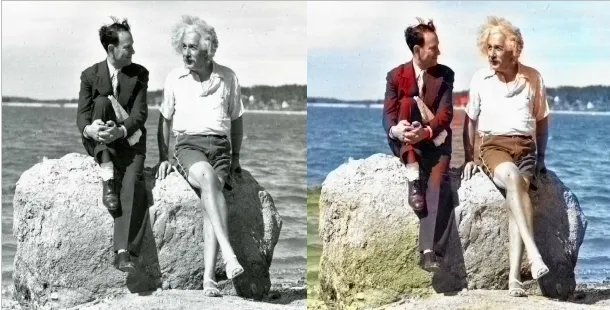Converting color images to black and white is quite easy using the
OpenCV framework,but for converting black and white images to color
we need to take a different approach. We need to add colors to black
and white pixels using Deep Learning Neural Networks. Let’s first
look at how the color information is represented in gray scale
images and digital images.
Gray scale image means the value of each pixel represents only the
intensity information of the light. Such images commonly display
only the darkest black to the brightest white. The image carries
only black, white, and gray colors, in which gray has multiple
levels.Each pixel typically consists of 8 bits(1byte) for gray scale
images and there are 256 possible grayscale colors.

Color images have three different channels called RGB. Each pixel
intensity was represented by three channels. Each color image has 24
bits/pixel, which means 8 bits for each of the three color
bands(RGB).There are 16 million colors possible.

Black and White Image to Color Image
We trained a neural network which converts this grayscale image to
the colored one. It needs to learn to map this single value to a
three channel image. For this purpose we used a concept called LAB
space where we figured out the lightness scale of each pixel and
mapped them correspondent A and B channels.

LAB color space
- Lab is an another color space same like RGB where
- L channel = Lightness
- A channel = from green-red
- B channel = from Yellow-blue
Here the grayscale images are in only the L channel. Hence,we find
lab color space is more convenient for our problem. we develop a
Neural network where it should map our lightness of pixel intensity
to their A and B channel. But even though we map A and B channels we
used to get only 2 channels but color images need 3 different
channels so the third channel is nothing but the original image.So
our input value is lightness of each pixel and our neural network
should predict A and B channels and add original input. Using OpenCV
we can convert them into RGB format.
Technologies used
- Neural Networks
- Open CV
- Tensorflow
- Statistics for Normalization
For this purpose we used a pre-trained neural network which was
already trained on Imagenet grayscale dataset.It uses a simple
convolutional neural network architecture. As explained above, we
take the L channel image and learn to predict a and b channels.
Combining the prediction and input would give us the colorized image
which looks like a Lab color space image.

After collecting pretrained weights and using tensorflow and opencv
we convert predicted lab space images into RGB format.Hence the
Neural network trained on 1000 different greyscale images we got
91.29 % accuracy for our results. Some results are

For videos we divide each frame individually and send it to the
neural network and finally we add each predicted frame and convert
them back to video. Some results using videos.
